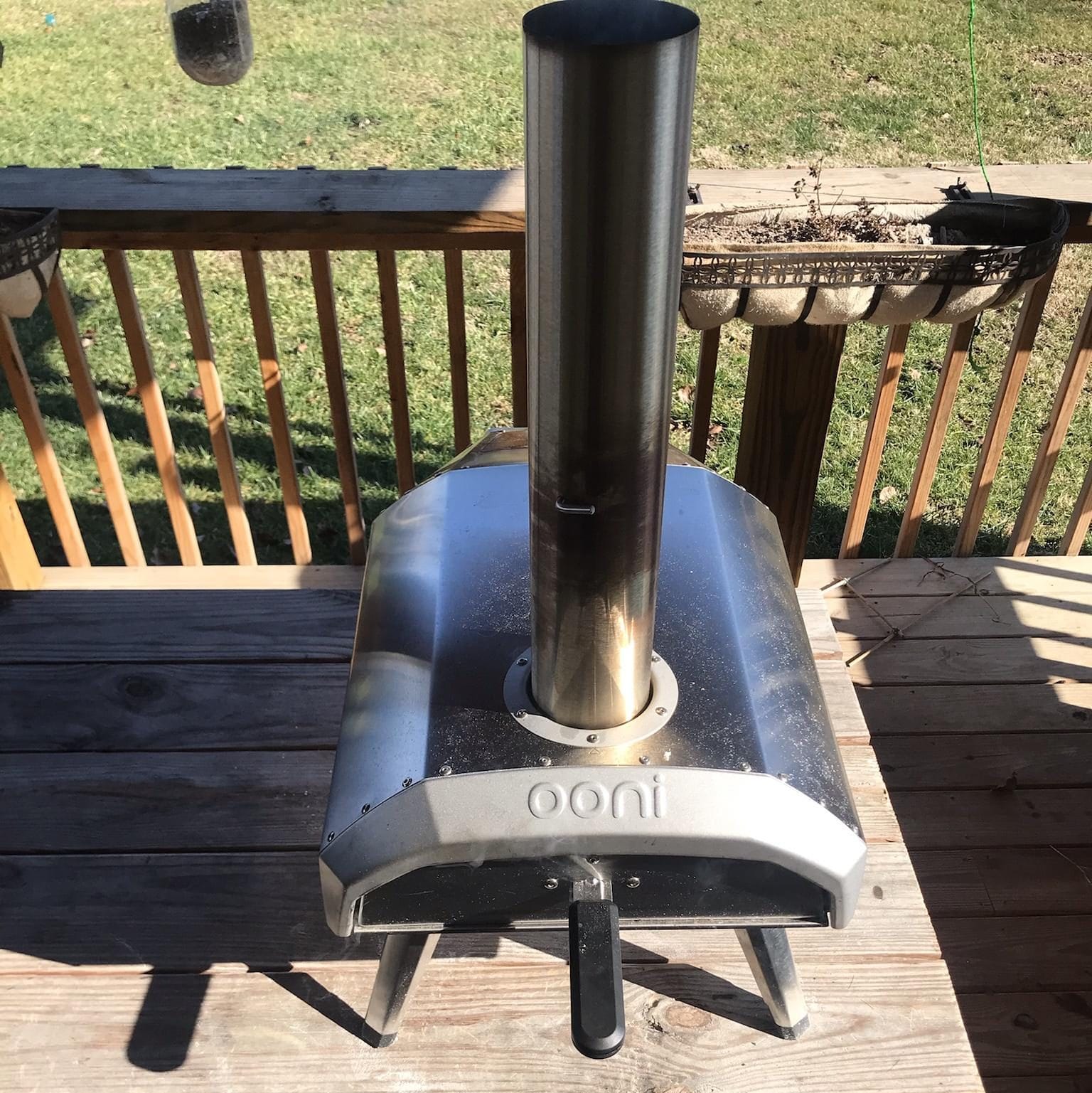Making pizza outside can be incredibly fun and is perfect for entertaining large crowds. If you light your outdoor oven fairly regularly, you will notice that it can become dirty really quick. It’s important to keep it as clean as possible, because a messy pizza oven can alter the taste of your pizza, cause a grease fire, or even stop working efficiently. Don’t worry – it’s a fairly quick and simple task. Let’s get started!
Before you Start: 3 Cleaning Tips
There are so many different kinds of pizza ovens out there and each one has its own, specific way to care for it. However, there are a few cleaning tips that hold true for every outdoor pizza oven out there.
- Clean it After Every Use
Every time you use your pizza oven, it is going to get at least a little dirty. Whether that means a tiny bit of flour is left behind after baking or an entire pile of cheese needs to be cleaned out, there will always be a mess! Clean your pizza oven after each use and you will be able to minimize the cleaning over time. If you take the time to get the grease out right away, it will not get baked on more the next time you use the oven. It is easier to clean “fresh mess” than old mess!
- Wait For The Oven To Cool
I know this seems obvious, but be sure to always let the pizza oven cool completely before cleaning it. This isn’t only for the (obvious) safety reasons, since pizza ovens are HOT, but it’s also to protect you equipment. If the pizza oven is hot and your cleaning supplies (or even just water) are cold, the pizza stone may crack. Waiting until the oven is completely cooled is imperative.
- Choose the Right Tools
Make sure you have all the tools you need to clean your outdoor pizza oven. Depending on the type of oven you own, you may need different tools. Here are a few things that you may need:
- A wire brush
- Water and vinegar
- A towel or cloth
- A shovel, dust pan and brush or small broom
- Gloves
Step by Step: Cleaning Outdoor Pizza Ovens
A well kept wood fired pizza oven will last longer and also make pizza that tastes better. You also want to clean your oven well to prevent a cooking hazard. Built up soot and grease can quickly light on fire – and not the type of fire we want.
If you have a stainless steel or portable outdoor pizza oven, such as one made from Ooni or Bertello, maintenance is typically much easier, especially if you’re using gas rather than wood as a fuel source. Always reference your ovens specific cleaning instructions if you have any questions about how to clean your personal oven.
1. Clean the Inside First
Start by cleaning the inside of your cooled, wood fired oven. You should first remove all of the ashes let behind from the burning wood. If your oven is run properly, at a very high temperature, there should be minimal ashes left behind. A wood fired oven should burn so hot that the ashes and soot are burned off. However, there will always be a little bit left behind.
Use a shovel or small dustpan to scoop out the ash and discard it. Then, use a small broom or soft brush to sweep away any excess ashes. If you use a gas oven, you won’t have any of this mess; however a soft wire brush can also be used to scrub off any burned on food. Avoid using hard brushes as they can scratch or damage the oven floor.
Clean the entire inside of the oven well, leaving behind to debris. You can use a slightly damp towel to wipe the inside of the wood fired pizza oven as well. This will ensure that the whole oven is clean and read to bake the next pizza.
2. Clean Off Any Grease
Pizzas can be greasy. All that cheese can drip in the oven and cause grease build up and then grease stains inside your pizza oven. You can remove these grease stains by using a little water and vinegar. Dip a sponge in the water and vinegar mix and rub it on the grease stain. If he stain is new, it should come right off!
Older grease stains will take a little more effort. Hot water and a soft scrub brush will help you get a tougher stain off. If the stain still remains, you can try using a mix of baking soda and vinegar on the stain. While this will lift the grease right off of the pizza stone, you want to use baking soda as a last resort. Baking soda can absorb into the stone and give your pizza a tangy taste. However, if you want that stain off, it will work in a pinch!
3. Clean The Outside
The outside of your wood fired pizza oven will surely get dirty over time. Any piece of outdoor cooking equipment will! Food falls on and around the oven, soot may build up and grease can get on the outside as well. Clean the outside of the oven to keep it looking nice and functioning properly.
With most wood-fired outdoor pizza ovens, it is okay to use water to clean the exterior. However, you want to be sure to keep the door to your pizza oven closed and cover any openings it may have. You do not want water to go into the pizza oven. Clean the outside according to the manufacturer directions and don’t be afraid to give it a good scrub. Make that oven shine!
Special Consideration: Stainless vs Brick
Brick pizza ovens can be tricky to clean. The best way to clean the exterior of a brick pizza oven is to use a mix of vinegar and water. Spray the mix on the bricks and then use a sponge to rub the cleaning solution off. Let the oven dry for several days before using it again.
You should also take care to heat your brick oven correctly. Start by heating the pizza oven to a low temperature. Let it run for about 30 minutes to an hour before really turning the heat up. The slow heating process will help prevent the bricks from cracking due to rapid heat fluctuation. When you are not using your brick outdoor pizza oven, keep it covered to protect it from the elements.
Stainless steel pizza ovens are much easier to keep clean. Simply wipe down the exterior with a damp cloth and dry immediately, as stainless steel can rust.
4. Clean The Chimney
Most outdoor pizza ovens have some kind of chimney or place for smoke to escape (unless you’re using gas). It is important to keep these clean in order to keep the oven functioning well and also prevent fires from occurring. Soot will build up in the chimney and needs to be removed often. Most soot will self clean when the oven is running at a high temperature – it burns right off! However, you should also take the time to brush it out by hand. Use a round brush to loosen and remove the soot. Avoid oven cleaners as they can damage your pizza oven and cause more harm than good.

Frequency
It is always best to keep your outdoor pizza oven as clean as possible. The faster you clean the oven, the easier it is. When left to sit, food debris can get caked on and baked into the oven. It will be much harder to clean if you wait too long and it can also create stains.
If you are able to clean it after each use, I urge you to do so. A good rule of thumb is to clean the oven the day after you use it. This gives the oven time to cool down completely and you can really assess how much scrubbing needs to be done. This also allows you to cook your pizza and then sit back, relax and eat. Cleaning can wait until the next day!
While I always recommend inspecting your chimney before using the oven, you can get away with cleaning the chimney just once per month. It should be pretty quick to brush the soot out of the chimney of your pizza oven. You should also consider deep cleaning the pizza oven once a month and really getting ever ash, every stain and every fingerprint off.
Cleaning your outdoor pizza oven often and thoroughly will not only help it last longer, but it will also help cook your pizza better.

